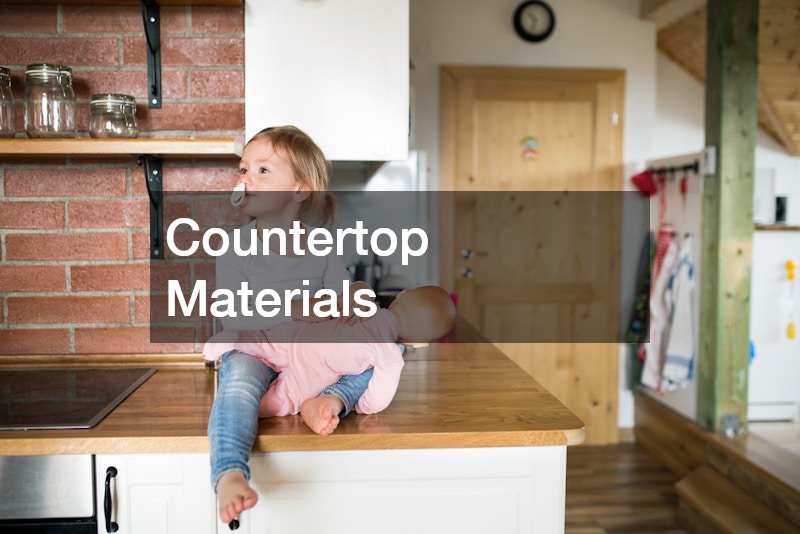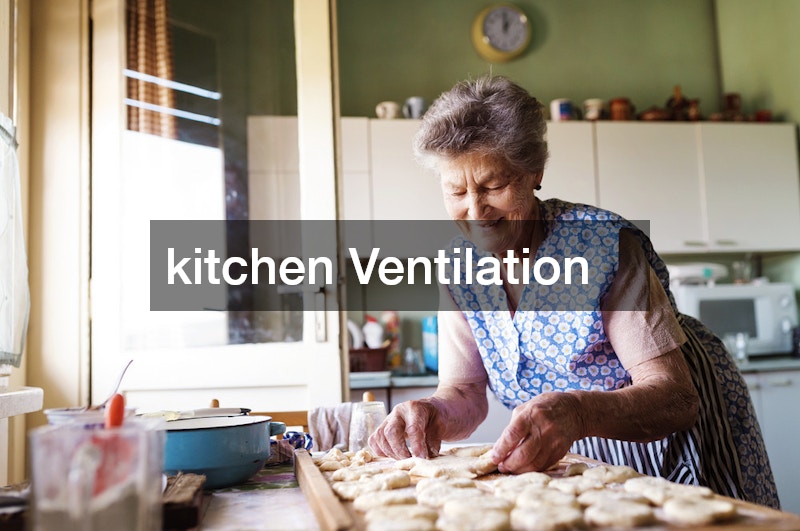10 Key Considerations for Your New House Kitchen Checklist Before Moving In
Introduction
When moving into a new home, the kitchen is often considered the heart of the house. It’s essential to plan a well-organized kitchen to ensure it’s both functional and appealing. A new house kitchen checklist can help you cover all the bases, ensuring no detail is overlooked during the design or renovation process. The kitchen is a functional and social hub, making it a significant investment for any homeowner. This article aligns with the larger topic of a new house build and will guide you through inspecting crucial kitchen elements before moving in. For a broader guide to preparing your new home, check out our comprehensive New House Build Checklist to ensure every detail is in place before you settle in.
Kitchen Layout and Workflow
The importance of a practical kitchen layout cannot be overstated. One popular design principle is the kitchen triangle, which places the sink, stove, and refrigerator at optimal distances for functionality. Maximize your kitchen space by ensuring a smooth workflow during meal prep. According to a study by the National Kitchen and Bath Association, kitchens designed with efficiency in mind see a noticeable increase in usability. Before moving in, consult the Essential New House Build Checklist for related inspection points.
When planning your kitchen layout, consider the overall square footage and how different elements can best be arranged for ease of use. Actionable advice includes positioning the sink near the dishwasher and the recycling bin to streamline daily chores. Additionally, consider incorporating an island to add counter space and facilitate social interactions. These strategies will keep your kitchen both functional and aesthetically pleasing. Look at kitchen design inspirations prioritizing practical spatial arrangements for a better user experience.
Studies have shown that easy-to-navigate kitchens lead to more home-cooked meals, promoting healthier lifestyles. Design experts suggest that homeowners should put significant thought into their kitchen’s layout to ensure long-term satisfaction. Reference the Essential New House Build Checklist for additional tips on what to inspect before moving in. A well-thought-out layout can make all the difference, from creating prep zones to efficiently placing kitchen appliances. Don’t underestimate the impact of a good design – it can elevate your kitchen from ordinary to extraordinary.
Storage Solutions: Cabinets, Pantries, and Beyond

Efficient storage solutions are a linchpin for kitchen functionality. Cabinet designs, pantries, and shelving options are crucial in maintaining an organized kitchen. For small kitchens, pull-out shelves and maximizing vertical space can significantly optimize storage. According to Consumer Reports, 59% of homeowners prioritize ample storage when designing their kitchens. Incorporating various storage solutions can make even the smallest kitchens highly functional and organized.
Aside from traditional cabinets, consider incorporating open shelving for frequently used items. This not only saves time but can also add a decorative element to your kitchen. Pantry closets with adjustable shelves can help you customize storage to fit your needs. Consider adding specialized drawers for cutlery, spices, and pots and pans. These detailed storage solutions should be part of your new house kitchen checklist.
Statistics reveal that cluttered kitchens lead to more stress and inefficiency. Therefore, investing in innovative storage solutions will enhance your overall kitchen experience. Pay attention to popular trends like pull-out pantries and lazy Susans that maximize space. Utilize every nook and cranny to make the most of your kitchen storage. This approach can greatly improve your kitchen’s functionality and relieve some of the stress associated with cooking.
Countertop Materials: Durability Meets Design

Choosing the right countertop material for your kitchen is an essential consideration. Each material has its pros and cons regarding durability, maintenance, and aesthetics. For instance, granite is highly durable but requires periodic sealing, while quartz is low-maintenance but costly. According to a report by HomeAdvisor, 75% of homeowners prefer quartz for its balance between durability and aesthetic appeal. The type of countertop you choose should also align with the overall theme of your new house kitchen checklist.
For high-traffic kitchens, consider low-maintenance options like quartz or laminate, which require less upkeep. If you frequently prepare meals, you’ll want a surface that can withstand knife cuts and hot pots without sustaining damage. Factor lifestyle considerations into your decision. For instance, busy families might prioritize easy-to-clean surfaces, whereas avid cooks prefer more durable options. Countertops are a key component in creating a functional, long-lasting kitchen.
Modern trends in countertop materials also include sustainable options like recycled glass or bamboo. These materials contribute to an eco-friendly home and add a unique aesthetic to your kitchen. New advancements have made these sustainable options more affordable and durable. Consider mixing materials for added visual interest—pairing quartz with butcher block can create a beautiful and functional kitchen space. Whatever your choice, your countertops should be a focal point of your new house kitchen checklist.
Appliance Selection and Placement
Selecting the right appliances for your new kitchen is a critical step. Essential appliances like refrigerators, stoves, and dishwashers should be chosen carefully to ensure energy efficiency and practicality. Energy-efficient models might have higher upfront costs but can save you money in the long run. According to Energy Star, certified appliances use 10-50% less energy and water than standard models. Consider how their placement will affect your kitchen’s workflow when choosing appliances.
Strategically place your appliances to maximize efficiency. For example, situating the refrigerator near the entrance to the kitchen can streamline grocery storage, while placing the stove and dishwasher close to the sink can simplify meal prep and cleanup. Proper placement is crucial for maintaining a smooth workflow in the kitchen. Remember to check appliance dimensions and clearance requirements before installation. For more appliance selection and placement tips, refer to the Essential New House Build Checklist.
Modern kitchens often feature smart appliances that can be controlled via mobile devices. These offer added convenience and energy savings, such as ovens you can preheat remotely or fridges that notify you when groceries run low. The popularity of smart technology in kitchens is rapidly growing, enhancing both functionality and user experience. Choosing the right appliances and ensuring they are correctly placed should be a primary focus in your new house kitchen checklist. These considerations will contribute to a kitchen that’s both efficient and a pleasure to use.
Lighting: Functionality and Ambiance
Lighting is an often overlooked but crucial element in kitchen design. Layered lighting, which combines task, ambient, and accent lighting, can dramatically improve functionality and aesthetics. Proper task lighting, such as under-cabinet lights, ensures your workspace is well-illuminated and safe. Ambient lighting provides general illumination that makes the kitchen inviting, while accent lighting can highlight design features. Effective lighting placement enhances kitchen usability and atmosphere, making it a key item in your new house kitchen checklist.
Strategically place lighting fixtures to maximize functionality. For instance, pendant lights can be placed over islands to create a focal point, while recessed lights can provide even illumination throughout the kitchen. Don’t forget about natural light, which can contribute significantly to the overall ambiance. Skylights or larger windows can introduce more daylight into your kitchen. Smart lighting options, such as programmable LEDs, offer the convenience of customizing the lighting according to different tasks and moods.
Smart lighting options are becoming increasingly popular in modern kitchens. These systems allow you to control various lighting elements through mobile apps or voice-activated assistants, enhancing both convenience and energy efficiency. According to Smart Home Statistics, 47% of homeowners intend to integrate smart lighting in their new kitchens. This trend not only adds a modern touch but also provides practical benefits. Integrate layered and smart lighting solutions into your new house kitchen checklist to ensure a bright and functional space.
Flooring Options for Style and Comfort
Choosing the right flooring for your kitchen is essential for style and practicality. Popular flooring options include tile, hardwood, and laminate, each with distinct benefits and drawbacks. Tile is highly durable and resistant to spills but can be uncomfortable to stand on for long periods. Hardwood offers a warm aesthetic but requires regular maintenance to avoid damage from spills. Laminate is a cost-effective option that mimics the look of real wood while being easier to maintain. Consider your lifestyle and aesthetic preferences when selecting flooring for your new house kitchen checklist.
Kitchens experience high foot traffic, so durability is vital when choosing flooring. Tile and laminate are both known for their durability, while hardwood can suffer from wear and tear but adds a timeless look to your kitchen. You may also want to consider engineered wood as a compromise between aesthetics and durability. For added comfort, consider incorporating anti-fatigue mats in areas where you stand for long periods, such as the sink or stove. These features will ensure your kitchen floor is both stylish and practical.
An important aspect of kitchen flooring is its ability to complement the overall design. Light-colored flooring can make a small kitchen appear larger, while dark flooring adds sophistication. Patterned tiles can inject character into the space, making your kitchen truly unique. Ensure the chosen flooring matches your cabinetry and countertops for a cohesive look. Before making a final decision, refer to the Essential New House Build Checklist to inspect the flooring quality before moving in. Flooring can set the tone of your kitchen, so choose wisely.
Kitchen Islands: Multi-Functional Centerpieces
Including a kitchen island in your design offers numerous benefits. An island provides additional prep space, storage, and seating options, making it a multifunctional asset. A kitchen island can also serve as a natural divider between the kitchen and living areas for homes with open floor plans. According to a survey by Houzz, 62% of homeowners want a kitchen island in their new home, emphasizing its growing popularity. Ensuring the island’s design and placement fit your kitchen layout is vital in your new house kitchen checklist.
Designing the perfect kitchen island depends on the size and layout of your kitchen. Smaller kitchens might benefit from a compact, mobile island that can be moved as needed. Larger kitchens can accommodate more substantial islands with built-in appliances, sinks, or seating areas. Ensure the island provides enough clearance for easy movement around the kitchen. Consider the island’s primary function in your kitchen, whether it’s for additional cooking space, storage, or social interactions. Tailoring the design to your needs will maximize its utility.
Studies show that kitchen islands are among the most desired features among modern homebuyers. This multifunctional piece not only enhances the kitchen’s usability but also adds a focal point to the room. Consider incorporating unique features such as a wine fridge, a pull-out trash bin, or integrated charging stations. These additions make the island even more versatile and practical. Making an island a focal point in your new house kitchen checklist ensures your kitchen is both functional and aesthetically pleasing.
Plumbing and Fixtures: Functionality Meets Style
Quality plumbing and fixtures are crucial for a functional kitchen. Consider investing in high-quality sinks, faucets, and water filtration systems that match your kitchen’s design. Stainless steel is a popular material choice due to its durability and ease of maintenance. For a contemporary look, matte black or bronze fixtures can add a touch of elegance. Without proper planning and inspection, plumbing issues can become costly and inconvenient. Always include plumbing and fixtures in your new house kitchen checklist.
When choosing fixtures, functionality should be your top priority. Touchless faucets, deep sinks, and pull-out sprayers can significantly enhance kitchen efficiency. Look for fixtures that offer a good balance between style and practicality. According to a National Association of Home Builders survey, touchless faucets are among the most desired features in new kitchens. These modern conveniences backed by warranties can provide peace of mind and long-term satisfaction.
Plumbing inspections should also be a part of your kitchen preparation. Leaks or faulty installations can lead to severe damage and high repair costs. Check for adequate water pressure and ensure all plumbing connections are securely installed. Installing a water filtration system can provide cleaner, better-tasting water and protect your plumbing from mineral buildup. Factors like these make plumbing considerations vital in your new house kitchen checklist, ensuring your kitchen runs smoothly and efficiently.
Ventilation: Keeping Your Kitchen Fresh

Proper ventilation is essential in maintaining a fresh and odor-free kitchen. Range hoods and exhaust fans are critical in removing smoke, steam, and cooking odors. A well-ventilated kitchen also reduces the risk of mold and mildew buildup, contributing to a healthier living environment. According to the Home Ventilation Institute, kitchens should have a minimum ventilation rate of 150 cubic feet per minute. Effective ventilation is a crucial aspect of your new house kitchen checklist to ensure a comfortable cooking environment.
Selecting the right ventilation system depends on your cooking habits and kitchen layout. Wall-mounted range hoods are more effective for heavy cooking, while under-cabinet models suit smaller spaces. Ensure your ventilation system is sized correctly for your kitchen to maximize efficiency. Ducted range hoods, although more complex to install, offer better performance by venting air outside. Proper ventilation is vital to maintain air quality when cooking elaborate meals or quick snacks.
Ventilation systems should also be inspected regularly to ensure they are functioning correctly. Look for models with washable filters for easy maintenance and longer lifespan. New advancements in ventilation technology include smart range hoods that automatically adjust fan speed based on the amount of smoke or steam detected. Incorporating these systems into your new house kitchen checklist can significantly enhance your kitchen’s comfort and air quality, ensuring a healthier and more pleasant cooking experience.
Smart Technology Integration
The integration of intelligent technology into kitchens is a rapidly growing trend. Smart appliances, lighting, and thermostats controllable via mobile devices add convenience and functionality. Imagine preheating your oven while you’re on your way home or adjusting the lighting for dinner via a voice command. According to a survey by Coldwell Banker, 45% of millennials are adopting smart home technology, with a significant focus on the kitchen. Including smart technology in your new house kitchen checklist ensures your kitchen is future-proof and highly efficient.
Smart technology not only adds convenience but also contributes to energy efficiency. Many smart appliances are designed to use energy more efficiently, reducing utility bills. Smart refrigerators can track expiry dates and suggest recipes based on available ingredients, minimizing food waste. Integrating technology like smart lighting systems and thermostats can further enhance energy savings and comfort. Consider these features as part of your kitchen design to make daily tasks easier and more efficient.
In addition to practical benefits, smart technology can significantly enhance security and safety in the kitchen. Smart smoke detectors, water leak sensors, and security cameras can alert you to potential issues, even when you’re not home. Knowing that your kitchen is monitored and safe, these features can provide peace of mind. Incorporating smart technology into your new house kitchen checklist will elevate your kitchen’s functionality and ensure it meets modern demands. A smart kitchen is not just a luxury but an essential in today’s tech-savvy world.
Conclusion
In conclusion, a well-thought-out new house kitchen checklist ensures your kitchen is functional, stylish, and ready for move-in. From efficient layouts and ample storage solutions to selecting the right appliances and integrating smart technology, each consideration plays a crucial role in your overall kitchen experience. Don’t forget the importance of inspecting key elements like plumbing, ventilation, and lighting before settling into your new home. These considerations will help you achieve an ideal kitchen setup with long-term satisfaction and convenience.
By investing time and thought into planning your kitchen, you ensure it meets both your practical needs and aesthetic preferences. A thorough inspection using the Essential New House Build Checklist can help identify any issues and confirm that all elements meet your standards. From durable countertops and stylish flooring to functional islands and modern fixtures, each component should contribute to a seamless kitchen experience. Use these key considerations as a guide to perfecting your new kitchen.
Your new home should offer comfort and efficiency; nowhere is this more important than the kitchen. Following your new house kitchen checklist guidelines can set the foundation for years of enjoyable cooking and social gatherings. Ensure every aspect, from layout to lighting, is designed carefully to optimize your kitchen’s functionality. With these tips, you can transform your kitchen into a harmonious blend of style and practicality, making your new house feel like home.

